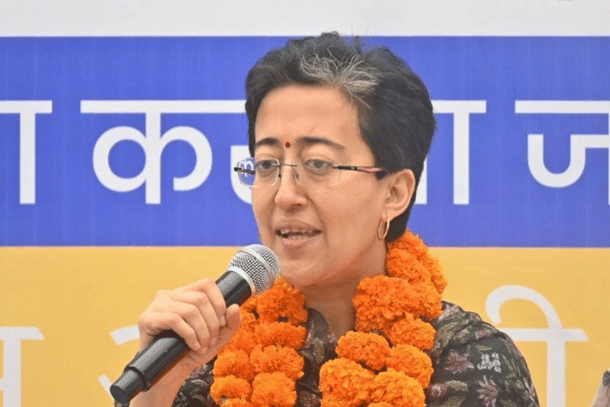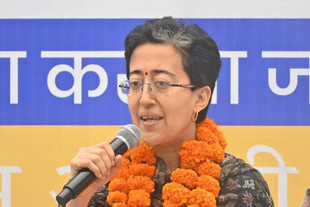Commentary
No Rocket Science, But Common Sense: Why Delhi Government’s Inaction On Stubble Burning Cannot Be Excused
Tushar Gupta
Oct 26, 2023, 02:26 PM | Updated 03:25 PM IST
Save & read from anywhere!
Bookmark stories for easy access on any device or the Swarajya app.


The Aam Aadmi Party (AAP), running the state government in Delhi is making significant progress in eliminating air pollution, but in the downward direction.
From asking adjacent states around Delhi to cooperate, to running one of them, to finally declaring that the origins of the air pollution remain unclear, the party and its government has taken the residents for a ride for another year.
Interestingly, six weeks ago, in the second week of September 2023, the Kejriwal government sustained its ban on the production, sale, storage, and bursting of firecrackers ahead of the festival.
In 2022, the Delhi government had imposed a fine of Rs 5,000 for the production, storage, and sale of firecrackers with upto three years in prison. The Punjab government, also under the AAP, had no such ban on firecrackers, in 2022.
AAP's Atishi Marlena's comments on the inability of the government to draft any policy must be seen as a failure of both the state administrations, in Delhi and Punjab, to combat pollution.
In Delhi, the usual gimmicks, like odd-even scheme for cars, have failed to yield any results.
In Punjab, Chief Minister Bhagwant Mann has been unable to eliminate stubble burning, contrary to what the party and its leaders had promised ahead of the elections in March 2022.
The writing, however, is on the wall, or in this case, in the air. Each year, the weeks preceding Diwali, witness stubble burning across Punjab and some parts of Haryana.
The stubble burning, usually, begins six weeks before Diwali, peaking in the fortnight of Diwali, before the new crop is planted. This results in a thick layer of smog, carried by the wind, towards the National Capital Region.
For the travelers along the Grand Trunk road, going up to Amritsar, the sight of the fields on fire, adjacent to the highway, are not uncommon.
This year too, the stubble burning is expected to peak starting first week of November (Diwali is on 12 November in 2023). The firemaps from last year (Diwali was on 24 October) in 2022 offer conclusive evidence.
Across October 2023, stubble burning has gone on unabated in Punjab, with no significant action on the ground by the AAP Chief Minister. It must be noted that the burning will only worsen as Diwali draws closer, so the worst of air pollution in NCR is yet to come.

The historical evidence around air pollution in Delhi must also be taken into account. In 2016, IIT-Kanpur conducted a detailed study of the cause of pollution in Delhi.
The report was then submitted to the Delhi government and Delhi Pollution Control Committee. While citing numerous reasons for pollution in the region, the report had no mention of firecrackers.
Road dust, industrial stack, vehicular movement, concrete batching, hotels and restaurants were cited as leading causes of pollution.
However, the report did not skip the mention of Diwali as a contributor to the depleting air quality, given the crackers involved.
For the duration between 2010 and 2015, across 1,891 days, the levels of particulate matter (PM) 2.5 were hazardous for eight Diwali days and very unhealthy for two days. These days included the day of Diwali and the following day.
Interestingly, for the same duration, there were 469 days of very unhealthy levels and 154 days of hazardous levels. Additionally, there were 632 days of unhealthy PM 2.5 levels.
The story was the same for PM 10 levels. For the same number of hazardous and very unhealthy levels days, there were 188 days of hazardous levels and 340 days of very unhealthy levels. So much for attributing the pollution of the region to Diwali alone.
For the last few years, the weeks around Diwali have witnessed a thick blanket of smog descending over the national capital region. Its origins are in the stubble burning that takes place between September-end and November-beginning.
Yet, for the last few years, the government in Delhi has been acting surprised, as if caught unaware of the smog. Until 2021, it was about pinning the blame on other parties running different state governments. This year, however, they are out of excuses, and thus that bizzare statement from AAP's Atishi Marlena.
The solution to Delhi's annual smog problem is not in restriction of construction, firecrackers, or heavy transport, but fixing the agricultural practices in the state of Punjab, a region now becoming infamous for the obsolete economic choices of its farmers.
This is no rocket science, but common sense. AAP, however, seems to be failing on both accounts.
Tushar is a senior-sub-editor at Swarajya. He tweets at @Tushar15_





